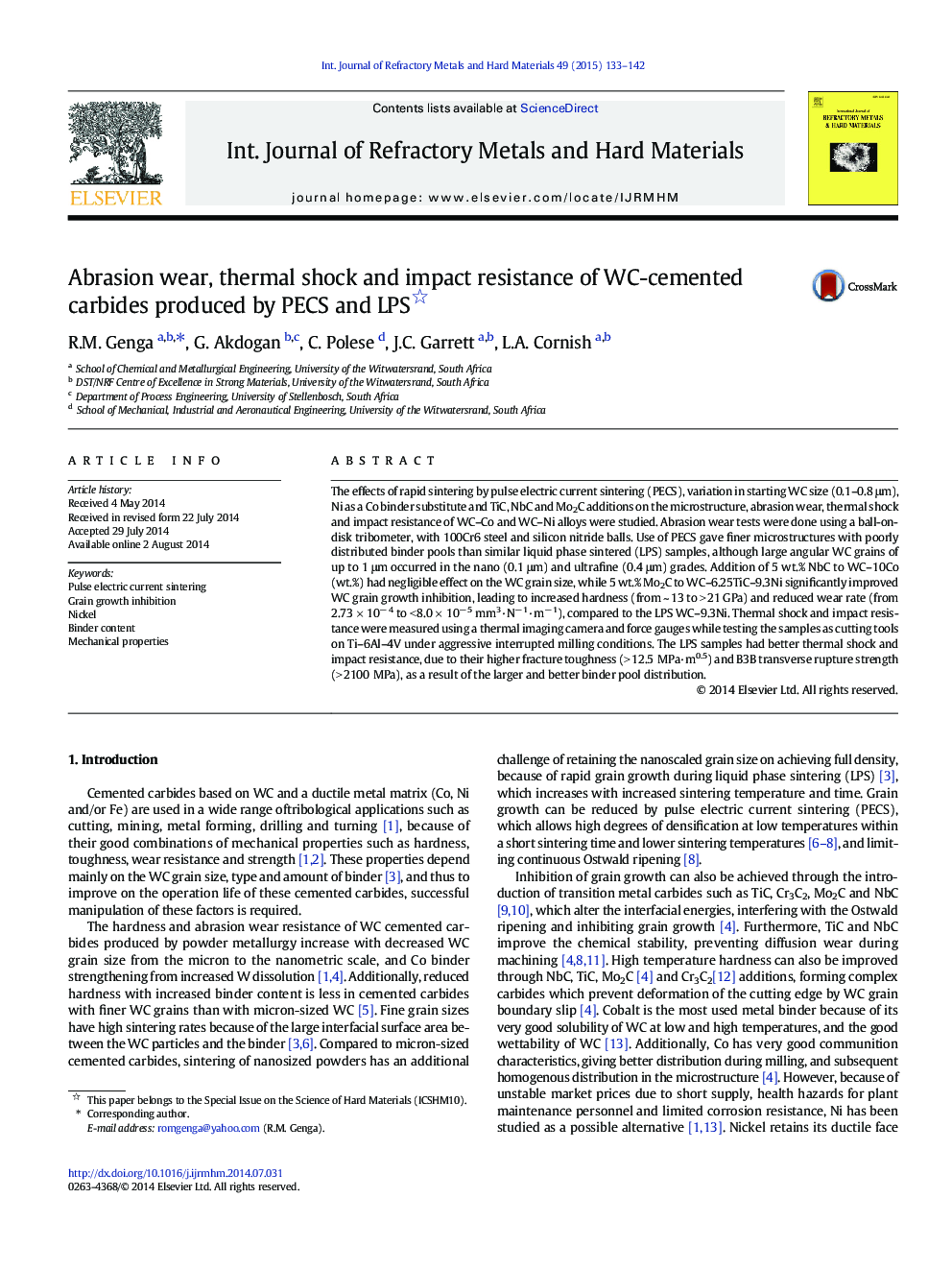| Article ID | Journal | Published Year | Pages | File Type |
|---|---|---|---|---|
| 1602997 | International Journal of Refractory Metals and Hard Materials | 2015 | 10 Pages |
•The PECS samples had finer WC grains but larger and poorly binder pools than the LPS samples.•Rapid WC grain growth in the nano and ultrafine grades occurred during PECS due to coalescence mechanism.•Addition of Mo2C significantly improved the WC grain growth inhibition and Ni binder distribution.•The PECS samples had higher hardness and abrasion wear resistance, but lower K1C and TRS than the LPS samples.•The LPS WC–Co and WC–Ni samples had better thermal shock and impact resistance than the PECS samples, due to their higher TRS and K1C.
The effects of rapid sintering by pulse electric current sintering (PECS), variation in starting WC size (0.1–0.8 μm), Ni as a Co binder substitute and TiC, NbC and Mo2C additions on the microstructure, abrasion wear, thermal shock and impact resistance of WC–Co and WC–Ni alloys were studied. Abrasion wear tests were done using a ball-on-disk tribometer, with 100Cr6 steel and silicon nitride balls. Use of PECS gave finer microstructures with poorly distributed binder pools than similar liquid phase sintered (LPS) samples, although large angular WC grains of up to 1 μm occurred in the nano (0.1 μm) and ultrafine (0.4 μm) grades. Addition of 5 wt.% NbC to WC–10Co (wt.%) had negligible effect on the WC grain size, while 5 wt.% Mo2C to WC–6.25TiC–9.3Ni significantly improved WC grain growth inhibition, leading to increased hardness (from ~ 13 to > 21 GPa) and reduced wear rate (from 2.73 × 10− 4 to < 8.0 × 10− 5 mm3·N− 1·m− 1), compared to the LPS WC–9.3Ni. Thermal shock and impact resistance were measured using a thermal imaging camera and force gauges while testing the samples as cutting tools on Ti–6Al–4V under aggressive interrupted milling conditions. The LPS samples had better thermal shock and impact resistance, due to their higher fracture toughness (> 12.5 MPa·m0.5) and B3B transverse rupture strength (> 2100 MPa), as a result of the larger and better binder pool distribution.
